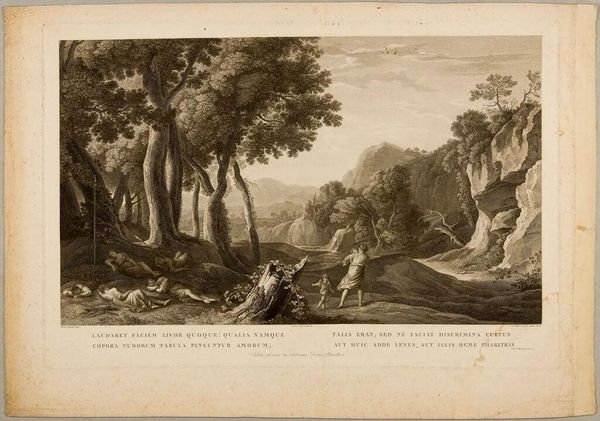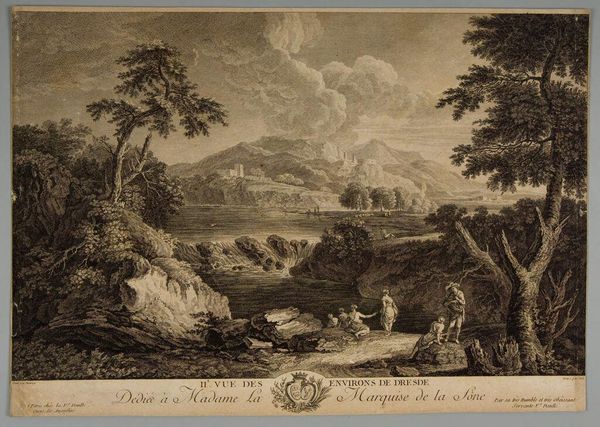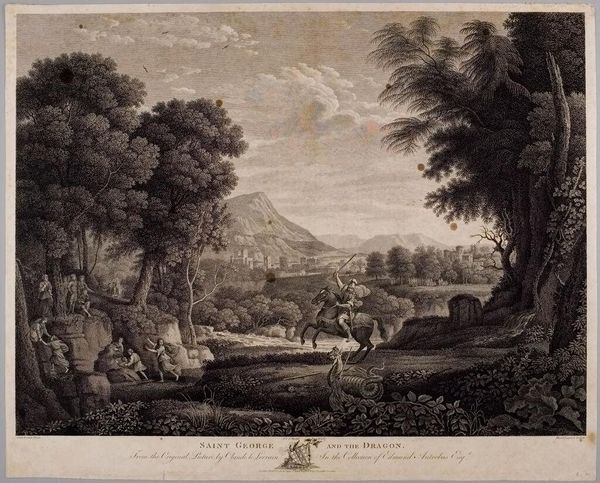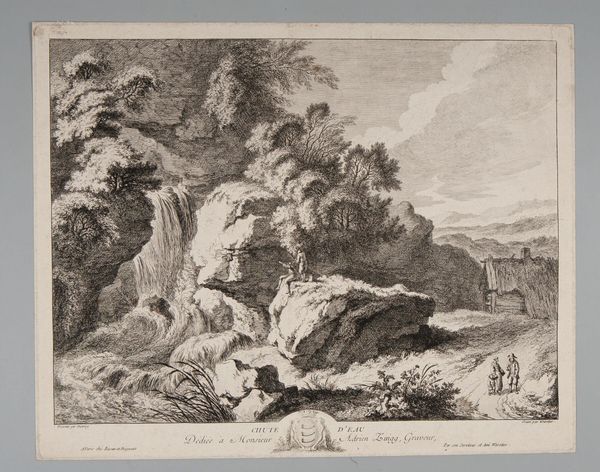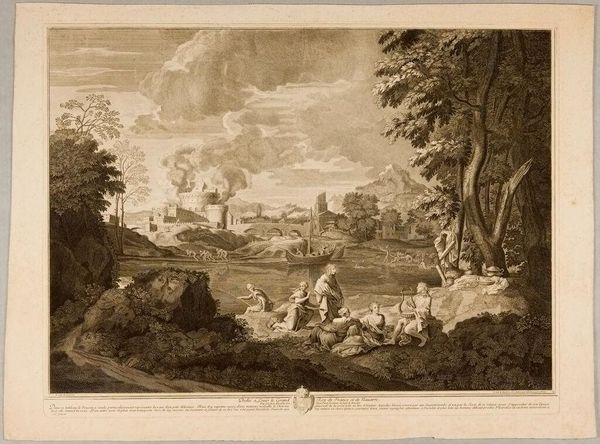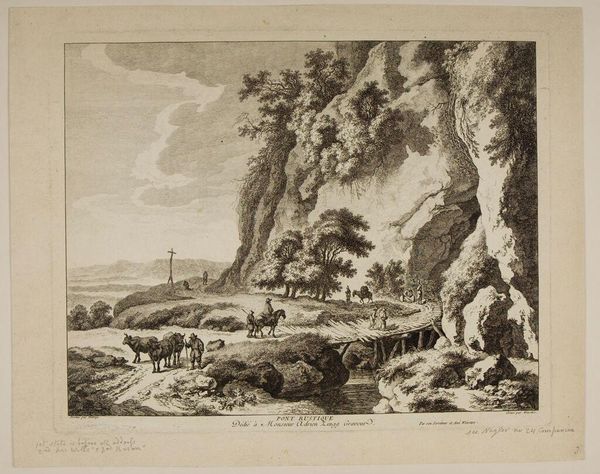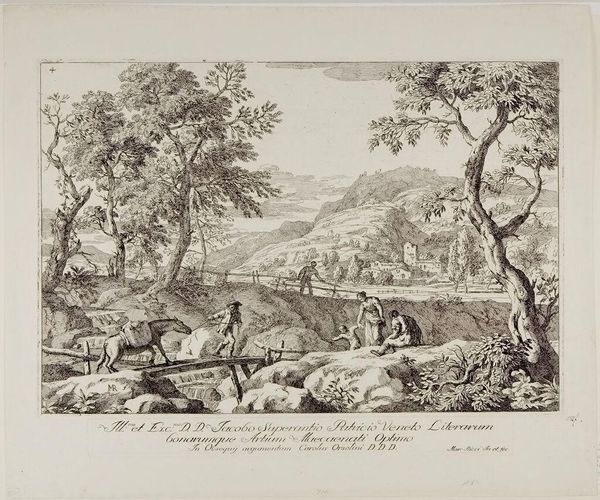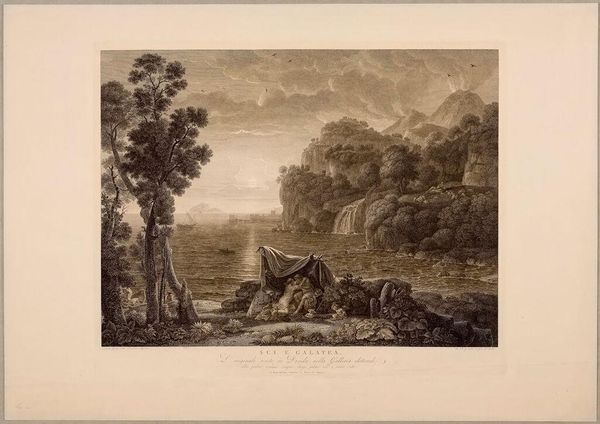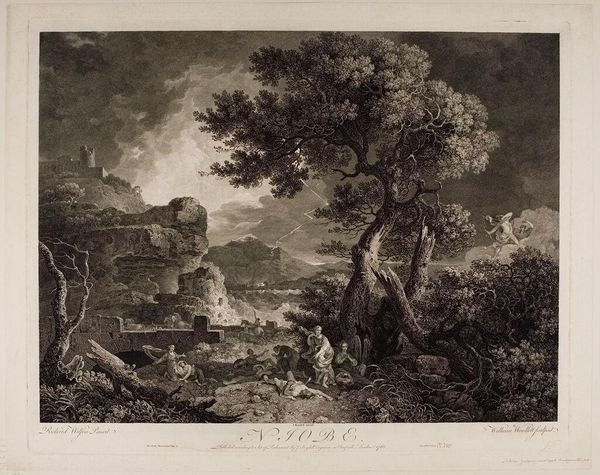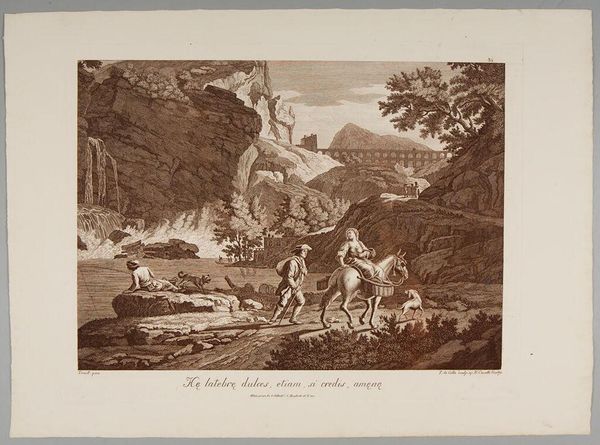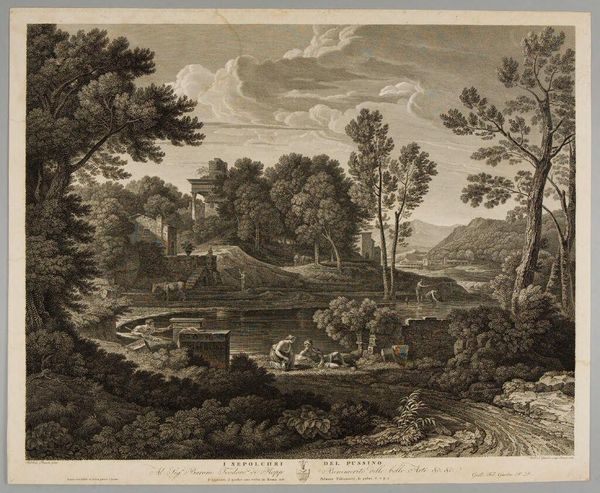
Copyright: CC0 1.0
Curator: Here we see Giovanni Volpato’s engraving, "Mercury and Argus." It depicts a scene from Ovid's Metamorphoses. I am struck by the interplay of vigilance and deception, central to this myth. Editor: It's fascinating how the sepia tones create a sense of removed antiquity. The printmaking process itself—the labor and skill required to transfer this pastoral scene—interests me more than the narrative, frankly. Curator: Surely the symbolic language speaks to you? Mercury, with his caduceus, lulls the ever-watchful Argus to sleep. The cow represents Io, transformed by Zeus, always under Argus's guard. Each element is laden with significance. Editor: Yet, this wasn't some unique artistic vision. Volpato replicated classical sculptures in printed form for mass consumption. His workshop aimed to meet the market demand for refined reproductions, democratizing access to art and creating labor for artisans. Curator: True, but that context doesn't negate the artwork's power. The image, reproduced widely, carried these allegories into countless homes, perpetuating the stories and their embedded values. Editor: Perhaps. I remain more intrigued by the paper it's printed on, the ink used, the economic conditions that enabled its creation. The very materiality argues against simple readings. Curator: A fair point. Still, engaging with the symbols offers a deeper understanding of the cultural mindset of the era. Editor: Well, I am left pondering how printmaking transformed artistic access, and you with contemplating Zeus’s wandering eye.
Comments
No comments
Be the first to comment and join the conversation on the ultimate creative platform.
